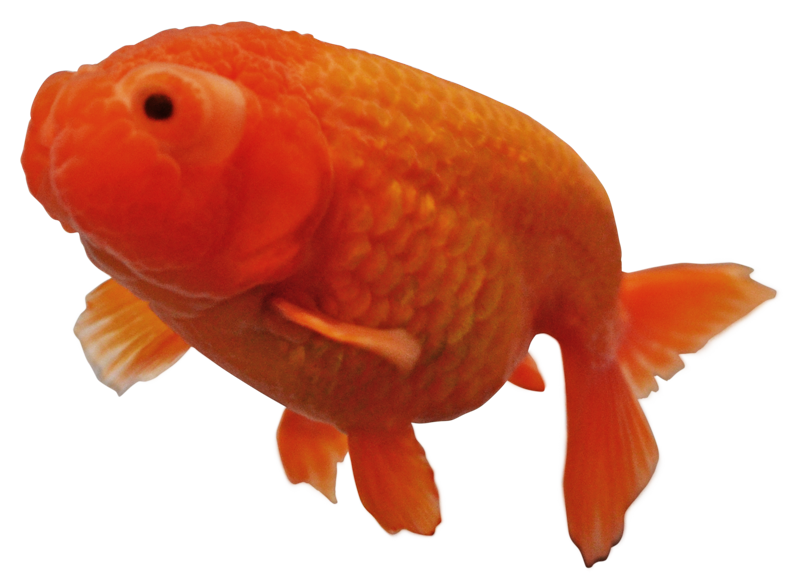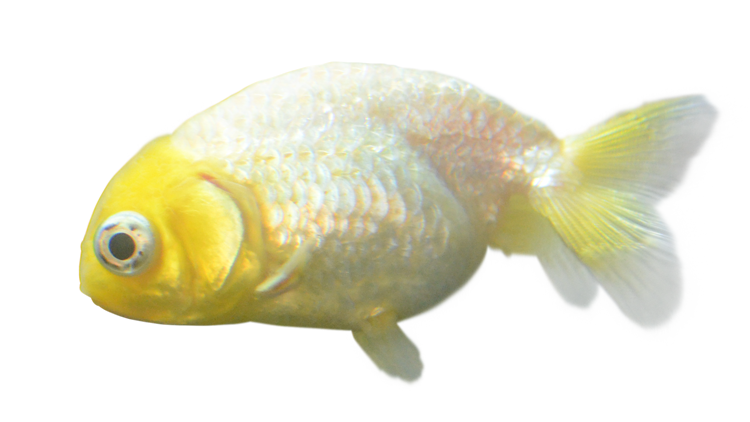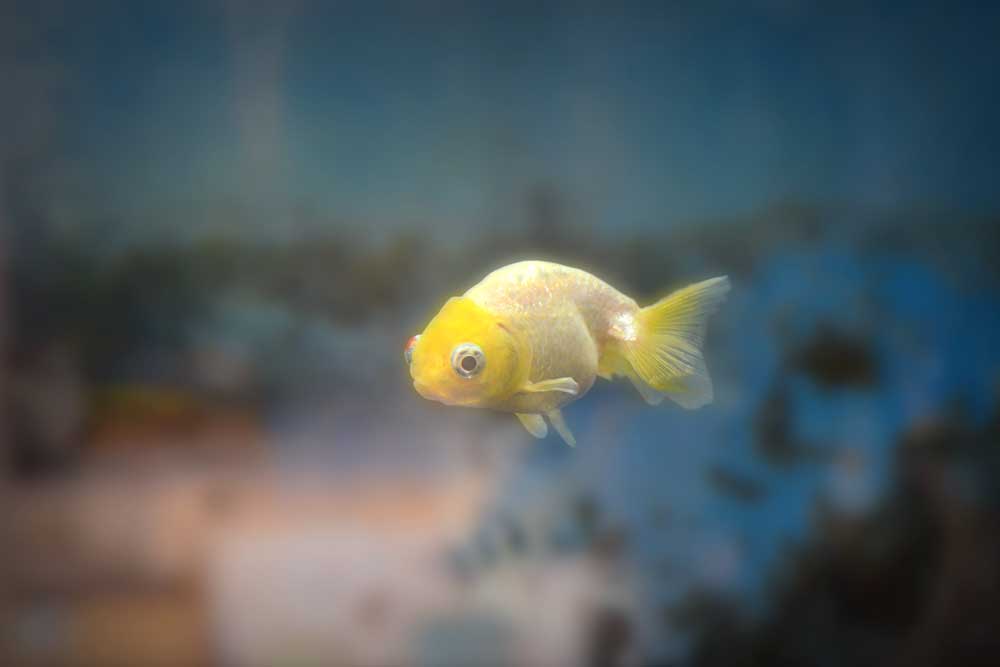
A red variety called “Shojo”

A modified variety of Ranchu with yellow head and frog eyes.
Carassius auratus var. 50
金魚の王様
King of Goldfish
愛好者が多く全国で品評会が行われており、改良が進んだ最高峰の品種であることから、金魚の王様と言われています。体長は最大20cm前後になりますが、卵のようなずんぐりとした体つきで、背びれがなく、頭部に肉瘤があり、尾びれが水平についているのが特徴です。
蘭鋳の歴史は江戸時代から始まります。中国からオランダ商人がマルコを長崎の出島に持ち込んだのが最初です。マルコとは中国で作出された背びれのない金魚のことで、このマルコを改良し、頭の肉瘤を発達させていったのが現在の蘭鋳です。マルコは蘭鋳だけでなく、大阪らんちゅう、ナンキンという3つの品種の基となり、役目を終えます。実は「らんちゅう」という名前も中国語に由来しています。背びれのない品種は中国語で「蛋種」、発音が〈dan zhong ダンヂョ〉であり、それが訛って「らんちゅう」になったそうです。
明治になり、蘭鋳の飼育、改良は盛んになります。そんな中、現代蘭鋳の基礎を完成させたのが初代石川亀吉氏らのグループであると言われています。観魚連(後の観魚会)を立ち上げ、毎年品評会が開催されるようになり、養魚家は腕を競い合います。品評会では上見により、「形体」「色彩」「泳ぎ方」などを評価されています。
With many enthusiasts, competitions are held nationwide, and as a highly refined, top-of-the-line variety, it’s often referred to as the king of goldfish. They grow to a maximum length of around 20cm, but are characterized by their stocky, egg-like body, lack of a dorsal fin, a fleshy bump on their head, and a horizontally positioned tail fin.
The history of Ranchu dates back to the Edo period, when Dutch merchants brought Marco from China to Dejima in Nagasaki. Marco was a dorsal finless goldfish developed in China. The current Ranchu was created by improving Marco and developing a fleshy bump on its head. Marco became the basis for three other varieties, including Ranchu, Osaka Ranchu, and Nankin, before eventually retiring. The name “Ranchu” actually comes from Chinese. The dorsal finless variety is “dan zhong” in Chinese, pronounced “dan zhong,” which was corrupted to “ranchu.”
In the Meiji era, breeding and improvement of orchids became popular. It is said that it was the group led by the first Ishikawa Kamekichi that established the foundations of modern orchids. They established the Fish Observation Association (later the Fish Observation Society), and began holding annual competitions where fish farmers competed against each other. At the competitions, fish were evaluated by a visual inspection on their shape, color, swimming style, etc.

Many enthusiasts are improving the breed.
参考文献
らんちう宗家石川 | らんちうの歴史 2024年6月29日閲覧
伊東養魚場 | らんちゅうとは 2024年6月29日閲覧
桜錦道 | らんちゅうの総本山 らんちゅう宗家・石川養魚場レポート 2024年6月29日閲覧
金魚の王様と言われている「らんちう」の語源について | 太田和良幸 著 | (2021年3月) 2024年6月29日閲覧
OHTAWA, Yoshiyuki, 2021, On the etymology of “ranchu”, which is said to be the king of gold fish: 11–22 p. 2024年6月29日閲覧